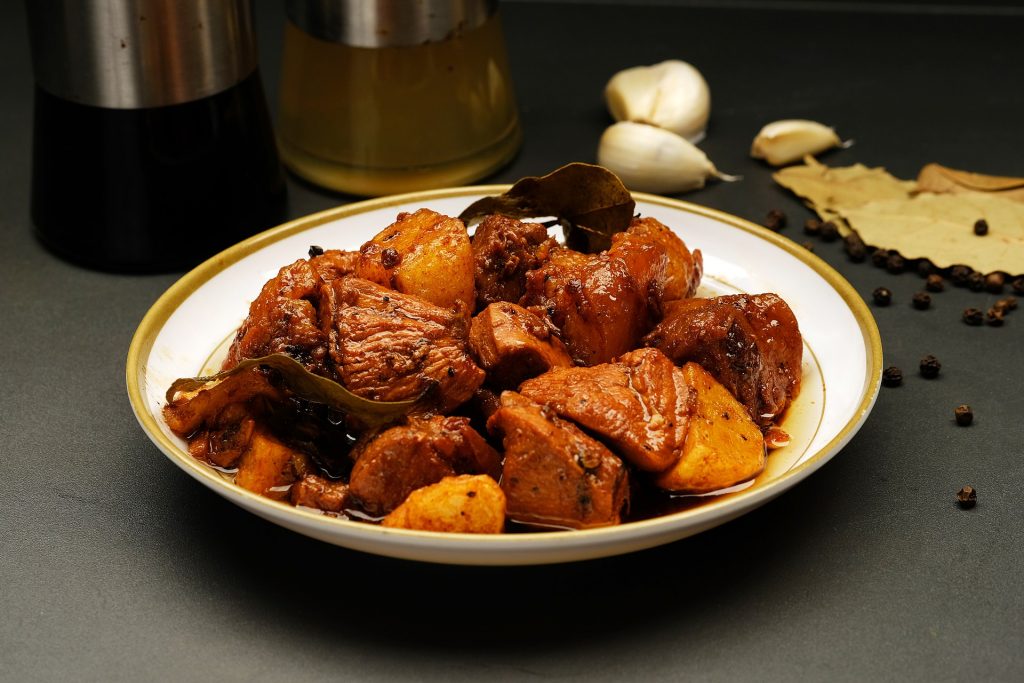Introduction
In the realm of culinary delights, few dishes hold the esteemed status that adobo commands. A hallmark of Filipino cuisine, adobo is more than just a dish—it’s a cultural emblem, a testament to the rich tapestry of flavors that define the Filipino palate. In this gastronomic exploration, we delve into the depths of what makes adobo an unparalleled culinary masterpiece, uncovering its origins, variations, and the secrets behind its enduring popularity.
Origins of Adobo
To truly appreciate adobo, one must first understand its roots. While its exact origins are shrouded in the mists of time, historians trace its lineage back to the pre-colonial era of the Philippines. The term “adobo” itself is derived from the Spanish word “adobar,” meaning to marinate or pickle—a nod to the dish’s method of preparation.
Legend has it that early Filipino tribesmen utilized vinegar as a means of preserving meat in the tropical climate—a practice that evolved into what we now know as adobo. Over the centuries, the dish underwent countless iterations, with each region of the Philippines imbuing it with its own unique twist, resulting in a kaleidoscope of flavors and ingredients.
The Essence of Adobo
At its core, adobo is a symphony of savory, tangy, and subtly sweet notes, harmonizing to create a taste sensation like no other. The key to its distinct flavor profile lies in the marinade, which typically consists of vinegar, soy sauce, garlic, bay leaves, and black peppercorns. This potent concoction not only infuses the meat with unparalleled depth but also acts as a natural preservative, allowing it to be enjoyed for days on end.
Variations Across the Archipelago
One of the most captivating aspects of adobo is its versatility. From the bustling streets of Manila to the tranquil shores of Palawan, each region of the Philippines boasts its own interpretation of this beloved dish. In the north, pork belly reigns supreme, its succulent meat bathed in a rich, soy sauce-based marinade. Meanwhile, in the Visayas, chicken takes center stage, its tender flesh marinated in a symphony of vinegar and aromatic spices.
In the south, coconut milk lends a creamy richness to the dish, elevating it to new heights of indulgence. And let us not forget the seafood-centric variations found along the coastal regions, where fish and prawns are bathed in a tangy marinade that sings of the ocean.
The Art of Adobo Preparation
While the basic components of adobo remain consistent, the method of preparation can vary greatly from one household to the next. Some swear by the traditional stovetop method, where the meat is slowly simmered in its marinade until tender, while others opt for more modern approaches, such as pressure cooking or grilling.
Regardless of the technique employed, one thing remains constant: the meticulous attention to detail and the reverence for tradition that defines the adobo-making process. It is a labor of love, a testament to the Filipino spirit of hospitality and generosity.

Adobo: A Culinary Ambassador
Beyond its intrinsic deliciousness, adobo serves as a cultural ambassador, introducing the world to the vibrant flavors and rich heritage of the Philippines. From humble family gatherings to elaborate fiestas, no celebration is complete without a steaming platter of adobo gracing the table.
Indeed, the allure of adobo knows no bounds, captivating the hearts and palates of food enthusiasts the world over. Its rise to prominence on the global culinary stage is a testament to its enduring appeal and timeless elegance.
Conclusion
In the pantheon of global cuisine, few dishes can rival the allure of adobo. With its rich history, diverse variations, and unparalleled flavor profile, it stands as a shining beacon of Filipino culinary prowess. Whether enjoyed in the comfort of home or savored in a bustling eatery, adobo is more than just a dish—it’s a culinary journey, inviting us to explore the depths of flavor and tradition.
So, the next time you find yourself craving a taste of something extraordinary, look no further than adobo—the crown jewel of Filipino cuisine.

